June is LGBT Pride Month, so we’re celebrating all of our pride by feeding babies to lions! Just kidding, we’re talking about lesbian history, loosely defined as anything that happened in the 20th century or earlier, ’cause shit changes fast in these parts. We’re calling it The Way We Were, and we think you’re gonna like it. For a full index of all “The Way We Were” posts, click that graphic to the right there.
Previously:
1. Call For Submissions, by The Editors
2. Portraits of Lesbian Writers, 1987-1989, by Riese
3. The Way We Were Spotlight: Vita Sackville-West, by Sawyer
4. The Unaccountable Life of Charlie Brown, by Jemima
5. Read a F*cking Book: “Odd Girls & Twilight Lovers: A History of Lesbian Life in 20th-Century America”, by Riese
6. Before “The L Word,” There Was Lesbian Pulp Fiction, by Brittani
7. 20 Lesbian Slang Terms You’ve Never Heard Before, by Riese
8. Grrls Grrls Grrls: What I Learned From Riot, by Katrina
9. In 1973, Pamela Learned That Posing in Drag With A Topless Woman Is Forever, by Gabrielle
10. Trials and Titillation in Toronto: A Virtual Tour of the Canadian Lesbian & Gay Archives, by Chandra
![]()
If you were ever a high school student, which you probably were, and if you were in Canada at the time, which most of you probably weren’t, you likely suffered through tedious history lessons about pugnacious Prime Ministers, endless language debates, and the significance of the Battle of Beaver Dams (an actual battle that I didn’t just make up).
Wouldn’t it have been great if, along with Laura Secord and the FLQ, you had learned about the Brunswick Four, a group of lesbians kicked out of a pub for subversive a cappella? Or if one of the many textbook chapters on battles and armies included the story of Private Barbara Thornborrow, who stood up to the Canadian Armed Forces when they tried to dismiss her for being gay?
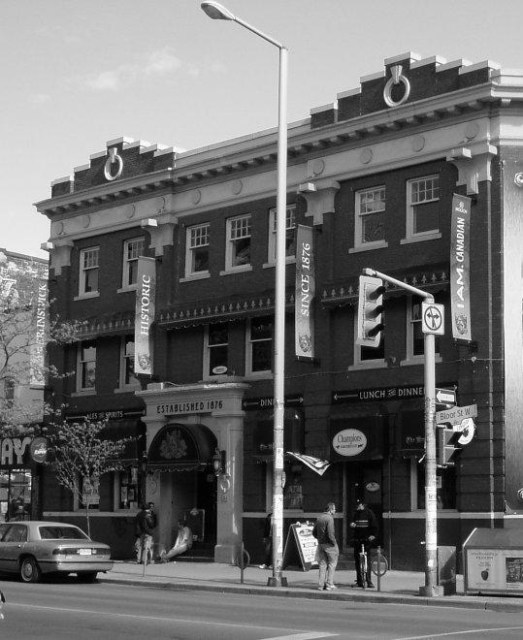
The Brunswick House, out of which singing lesbians were kicked.
Happily, in the rainbow-tinted future we are surely headed for, where queer history is included in high school curriculum as a matter of routine, textbook editors will have somewhere to turn for their chapter content: The Canadian Lesbian & Gay Archives. I bet you didn’t even know we had one of those! Well, we do, and here are some things I learned that I thought you might like to learn too.
Basement Boxes and Political Bodies
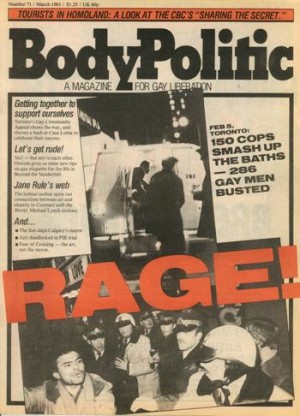
via Xtra.ca
The CLGA opened to public fanfare in 1973 in a ceremony hosted by the Queen! Just kidding. It started out as a bunch of boxes in somebody’s basement in Toronto. That somebody was a member of a small but driven collective who, two years prior, had started publishing The Body Politic, which would turn out to be one of Canada’s most influential queer magazines. Originally intended as a way to keep track of the vast oceans of paper that come with a self-publishing operation, the CLGA soon outgrew its basement corner and became the second-largest LGBT archives in the world.
The Body Politic ran for 15 years, which is approximately eleventy hundred in grassroots-underground-magazine years, and during this time managed to subvert a lot of cultural expectations and piss off a lot of authority figures without getting shut down. The magazine contained the expected variety of political musings, calls to action, racy photos, artwork, poetry, and lots and lots of articles about sex (including a guide to fisting etiquette that led to indecency charges in 1982). Little content seems to be available online, but you can peruse the CLGA’s records to your heart’s content here.
The magazine was discontinued in 1987 to make way for its successor, Xtra!, still published across Canada today. As with most queer publications of its time (and arguably today), TBP seems to have been mainly run by, written for, and read by gay men, but there were significant contributions by queer women as well, most notably Jane Rule.
Jane Rule boys drool!
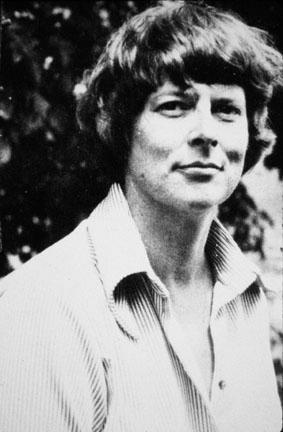
Jane Rule, photography by Betty Fairbank
Jane Rule, who by name alone was obviously a lesbian superhero, had published Desert of the Heart in 1964 – a love story that resonated with closeted women across the country, made headlines, and earned her the title of The Only Lesbian in Canada. (I guess it makes sense that we can only have one lesbian, since we only have one road, and this helps to keep U-Haul traffic jams to a minimum.)
She wrote a regular column for TBP and had so many interesting things to say about so many topics that I had trouble deciding where to start. Unafraid of taboo or controversy, she wrote about the “gentler eroticism” of elderly people, decried the “possessiveness and deprivation” of sexual fidelity, and blamed gay oppression on the uptight sexuality of straight people.
Equally outspoken off the page, she was so opposed to the institution of marriage that she refused survivor benefits and urged people to lie on the Canadian census. Even if you don’t entirely agree with her reasoning, which I don’t, you have to admire her general badassness.
Jane Rule wasn’t, of course, the actual Only Lesbian in Canada. She was just the only one with a name and a face in mainstream media. For an out lesbian in the sixties and seventies, her superpower was visibility, where invisibility was the norm. She wore a rainbow cape of pride and leapt over bigots in a single bound! Am I carrying this metaphor too far? Okay, moving on.
Deck the Halls with Gays and Lesbos
In the rainbow-tinted fantasy future previously mentioned, the halls of government buildings will be adorned, alongside stuffy portraits of national dignitaries, with fabulous depictions of LGBT activists and pioneers. Luckily, again, the work of future government-building-interior-decorators will be simplified thanks to the CLGA’s National Portrait Collection, an exhibit of works by LGBT artists celebrating people who have made important contributions to queer communities in Canada. And luckily for us, the whole collection is available for our optical pleasure online.
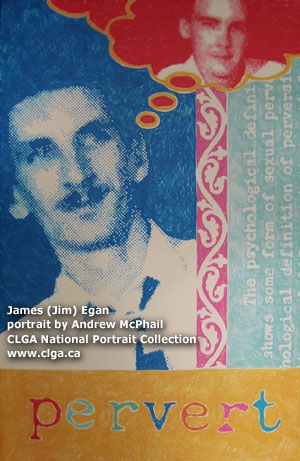
via canadian gay and lesbian archives
Jim Egan, Canada’s First Gay Activist
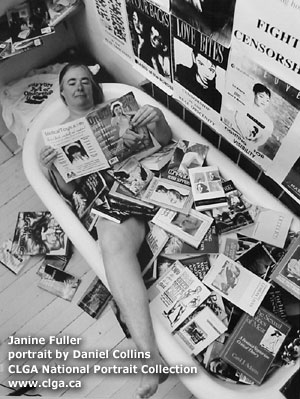
via canadian gay and lesbian archives
Janine Fuller, Writer and Activist
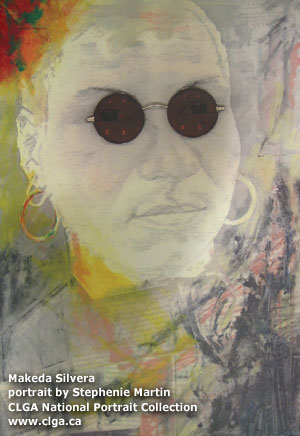
via canadian gay and lesbian archives
Makeda Silvera, Writer and Activist
In addition to this gallery, the CLGA has a few other digital collections, but in order to jump into the actual oceans of paper themselves, you have to visit the Archives in person at 34 Isabella Street, Toronto. Forget the CN Tower; who wants to spend their afternoon stuffed inside a concrete phallus with a bunch of tourists? Go learn yourself some queer history instead!
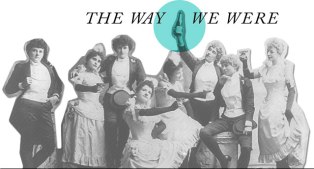

Oh Canada. You’re just so awesome.
Subversive a cappella is my new favorite genre.
Oh my goodness, this is checking all my boxes;
queers
history
the best & my favourite/geographically closest city in the world
so yes, I feel a field trip is in order.
I’m Canadian and had no idea about these archives! Reading through the bios makes me feel so so Proud <3 Canadian queers are awesome!
well, I know what I’ll be doing for the next few hours. thanks for the post! :)
You’re welcome!
I’m super gay and super Canadian and had no idea about this. Makes me both proud and embarrassed. Will definitely be looking into this some more. Yay Canada :)
I lived in and around Toronto for much of my life and never knew this existed, so don’t feel bad!
This is amazing! Thanks for the coverage! And, as President of the Board and former GM of the CLGA, I offer a little bit of an explanation as to why after almost 40 years, you might be hearing about us for the first time just now: Up until about 2.5 years ago we did not have a space for public programming. We basically were a collecting organization and a research facility. So if you didn’t have a reason to do research for a thesis, article, legal defense, film or book, you would likely not have much reason to have us on your radar. We were gifted a house – a permanent home with a Reading Room, processing and storage space, a Gallery and an Event space through a Section 37 Agreement with the City from the Toronto Children’s Aid Society and also received funding from Cresford Development as an additional Section 37 agreement. Our focus expanded to now be able to do a LOT more public programming and education. We now attract more volunteers with more diverse skills (but always need more!) We launched tonight our first online project the Pin Button Project and we have over a year’s worth of excellent exhibition programming. We have had guest speakers, readers, screenings, etc. So don’t feel bad or embarrassed or critical – we have always maintained professional standards while being solely volunteer-run. Now we have one paid staff person, a General Manager, and so much more potential to be relevant to more folks! Visit our website clga.ca; join us on facebook; follow our tweets; volunteer; donate (we have no ongoing committed funding other than our community donors!). Celebrate. Happy Pride. And thanks so much for the coverage!
I thought the Battle of Beavers dam was a thing from the Chronicles of Narnia… Is Canada secretly Narnia?? I NEED TO GO BACK TO THERE.
Dental dams should be renamed beaver dams
I’m so proud to have one of my short stories in the archives! There is in fact a school where you learn about the Brunswick Four and stuff- it’s the Triangle Program, a really small alternative high school in Toronto. I went for all of five seconds, but it was great.
Thanks for the awesome coverage of the CLGA! We are opening a new exhibition on Friday, June 22 called: Public Sins/Private Desires: Tracing lesbian lives in the archives, 1950-1980. We’re using the show to celebrate the 20th anniversary of Lynne Fernie and Aerlyn Weissman’s documentary Forbidden Love (1992) and to feature some of the lesbian content in the archives.
When I curated the National Portrait Collection exhibition[NPC] this spring [opened May 11], it was terrific to be able to meet some of the people in the collection. The show was called Looking Forward/Looking Back and featured the 25 people first inducted into the CLGA NPC. We are planning to add the new images and new statements to the NPC on-line materials – hopefully as a virtual exhibition [we just need to find a talented volunteer!].
This is a fantastic intro to the CLGA collection. Thanks for posting! If you want to follow the CLGA, just pop by its blog at http://www.clgaengagement.blogspot.ca/ or visit the main page http://www.clga.ca and click on “News”.
…and ‘lesbian’ does come first in the name of the organization, a conscious and political choice, I’m sure.
Pingback: Let’s Talk About Vaginas «
Is the CLGA a sanctioned charity? I believe it was in the past but not sure if that has changed or not. Thanks for any info.